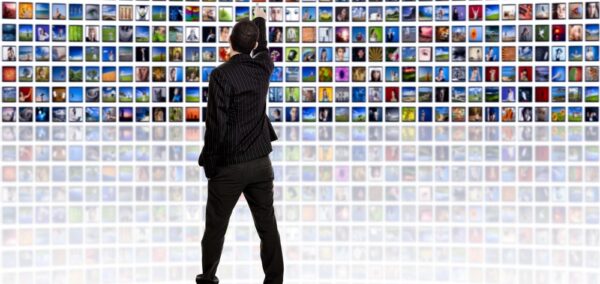
James Dolan (Cablevision’s CEO), normally a fan of throwing the cat amongst the pigeons, actually posited the potential longevity of cable this week—catnip, doubtless, to those hoping today’s business model isn’t as endangered as it seems. Disney also feels like they have time, estimating OTT will become a true competitor no sooner than five years out.
Those same enthusiasts also will have found great solace in news that OTT subscribers churn rapidly, and, indeed, that just 7% of US households have broadband Internet without Pay TV. This may, however, turn out to be less the bursting of the OTT bubble than some would prefer.
AT&T has embraced the combination of all modes of delivery. Already shaking up the existing cable/satellite model with their IPTV U-Verse option, they now are offering all kinds of combinations. Sure, the DirecTV Sunday Ticket offering turns out to be a little more restricted than it seemed when first announced, but is there really any doubt of its future expansion? With over half a million subscribers evaporating in Q2, and billions of dollars of market capitalization following suit, the operators are quietly but inexorably grabbing the bull by the horns and pushing the boundaries of what it means to be Pay TV.
Meeting the threat head-on is something HBO has been a leader in, with their HBO Now service, which recent analyses suggest may very well have exceeded a million subscribers. This week came the much-anticipated news that less than 1% of existing HBO subscribers actually switched, meaning that the new subscribers are, indeed, net new. Rather than waiting for the industry to change, HBO are leading the pack in extending into the millennial ranks that are often assumed to be reserved for technology start-ups. They now anticipate international rollouts on a case-by-case basis, with high expectations for excellent profitability.
In a rather more orthogonal approach, we learned that NBCU is investing in Buzzfeed and Vox, looking to target those pesky millennials who are at the forefront of the cord-cutter/cord-never ranks. It’s a risky move, perhaps, as new research reveals that less than one in three Netflix and Amazon viewers actually watch original content. If that’s indeed the case, then investing in content that is both original, and somewhat different to viewers’ expectations of TV may prove quixotic – but until someone works out a guaranteed way to the hearts and minds (and wallets) of younger viewers, it’s a bold move.
Of course, all these experiments will need careful tending, as our own research shows the OTT subscriber to be quite picky. Doubtless some of these efforts will prove less than successful than others, but getting it right may very well define success for the next fifty years.
Don’t think, though, that incumbents will respond to threats to their business by simply changing – they also are protecting themselves in court. Foxtel, for instance, is looking for ways to go after pirates, who de-value the broadcast rights for which the company pays dearly.
However, as The Wall Street Journal reports in an interview with Michael Wolf, the best news of all is that rather than fighting over a finite number of viewer hours, entertainment providers are looking at a growing audience. He suggests that US viewers are in the process of increasing their viewing time from 5 ½ hours to 6 ½. That sort of increase should be music to everyone’s ears.
Speaking of music, if you long for the days when video killed the radio star, perhaps now is the time to try and re-configure the lyric to show mobile coming out on top – as apps are starting to provide a new way for incumbents like MTV to make up some lost ground.
One of the brightest lights in keeping viewers coming back, of course, is sports, and the dip in subscribers can mean only one thing: more demand for rights to sports, and an attendant growth in prices. It’s nice to know, then, that good old-fashioned market forces can work to keep things below the stratosphere. Case in point: in Spain, operators have kicked into high gear on a price war to attract customers to the sporting events for which they have the rights.
Meanwhile, the leagues and associations themselves are not standing pat with their old-world Pay TV relationships: more than ever are expanding their direct-to-consumer offerings, as well as cementing relationships with OTT outfits, whose future represents the growth opportunity every executive needs to uncover. And they’re willing to work together: the NHL will be using the services of MLB Advanced Media to go over the top. Joe Inzerillo – CTO and Executive VP at MLBAM – wins quote of the week for calling the business of streaming video on the Internet “like trying to live on Mercury”.
And it’s not just what we think of as the ‘big sports’ breaking through: Rugby’s 2015 World Cup will be available through Universal, doubtless looking to follow up on the success of ESPN’s efforts with the Cricket World Cup.
Expecting all our favorite match-ups to make the move to IP delivery in the short term, though, may be a path to disappointment, as the shift to direct-to-consumer goes to the very heart of incumbents like ESPN. Some period of transition will be necessary to wean the leader in sports off the estimated $10B per year it drives in carriage fees.
All told, we are seeing an acceleration in the move to TV being not a choice between cable or Internet – but rather a combination of the two. So long as the business models can keep up with viewer expectations, this is going to be a wild and exciting ride…and likely a faster one than Disney or Cablevision are publicly expecting.







